What is Quality Function Deployment?
The Quality Function Deployment (QFD) philosophy was pioneered by
Yoji Akao and Shigeru Mizuno. It aims to design products that assure customer
satisfaction and value - the first time, every time.
The QFD framework can be used for translating actual customer statements
and needs ("The voice of the customer") into actions and designs to build
and deliver a quality product .
Typical tools and techniques used within QFD include:
- Affinity Diagrams. To surface the "deep structure" of voiced
customer requirements.
- Relations Diagrams. To discover priorities and root causes of
process problems and unspoken customer requirements.
- Hierarchy Trees. To check for missing data and other purposes.
- Various Matrixes. For documenting relationships, prioritization
and responsibility.
- Process Decision Program Diagrams. To analyze potential failures
of new processes and services.
- Analytic Hierarchy Process. To prioritize a set of requirements,
and to select from alternatives to meet those requirements.
- Blueprinting. To depict and analyze all the processes which are
involved in providing a product or service.
- House of Quality.
The House of Quality
The House of Quality is a popular collection of several deployment
hierarchies and tables, including the Demanded Quality Hierarchy, Quality
Characteristics Hierarchy, the Relationships Matrix, the Quality Planning
Table, and the Design Planning Table. It has the form of a table, that connects
dots between the Voice of the Customer and the Voice of the Engineer. The
House of Quality is used by multidisciplinary teams to translate a set of
customer requirements, using market research and benchmarking data, into an
appropriate number of prioritized engineering targets to be met by a new product
design.
The House of Quality is a sort of conceptual map, which provides means
to the interfunctional planning and coordination of product improvement and
product development. In a way this method brings the customer needs in the
focus to design or to redesign the product and service. In this method the
starting point would be the customer needs which are found from any market
research survey about the product in question. Primary, secondary and tertiary
customer attributes are found. These form the base of the house. Corresponding
engineering characteristics are specified which should be in clear measurable
terms. Now the interdependencies are mapped which are in the form of the roof
of the house. Accordingly, technical difficulties in achieving the desired
changes are calculated. With the help of imputed importance of each characteristic
the cost is worked out. Then final targets are set in clear measurable terms.
In essence with the help of customer needs, the product is redesigned in clear
unequivocal measurable terms.
The House of Quality contains six major components:
- Customer requirements (HOW`s). A structured list of requirements
derived from customer statements.
- Technical requirements (WHAT`s). A structured set of relevant
and measurable product characteristics.
- Planning matrix. Illustrates customer perceptions observed in
market surveys. Includes relative importance of customer requirements, company
and competitor performance in meeting these requirements.
- Interrelationship matrix. Illustrates the QFD team's perceptions
of interrelationships between technical and customer requirements. An appropriate
scale is applied, which is illustrated by using symbols or figures. To fill
this portion of the matrix involves discussions and to build consensus within
the team, which can be time consuming. Concentrating on key relationships
and minimizing the numbers of requirements are useful techniques to reduce
the demands on resources.
- Technical correlation (Roof) matrix. Used to identify where technical
requirements support or impede each other in the product design. Can highlight
innovation opportunities.
- Technical priorities, benchmarks and targets. Used to record:
- The priorities assigned to technical requirements by the matrix.
- Measures of technical performance achieved by competitive products.
- The degree of difficulty involved in developing each requirement.
The final output of the matrix is a set of target values for each technical
requirement to be met by the new design, which are linked back to the demands
of the customer.
Origin of Quality Function Deployment. History
QFD was first developed in Japan in the late 1960s by Professor Yoji Akao
and Professor Shigeru Mizuno as a quality system. QFD was aimed at delivering
products and services that efficiently satisfy customers. One should listen
to the "voice of the customer" throughout the product or service development
process. Mizuno, Akao and other Japanese Quality Management experts developed
the tools and techniques for QFD and organized them into a comprehensive system
to assure quality and customer satisfaction in new products and services.
After World War II, statistical quality control had taken roots in the Japanese
manufacturing industry. Quality activities were being integrated with techniques
that were emphasizing the importance of making quality control a part of business
management. This became eventually known as TQC and
TQM.
Mizuno and Akao wanted to develop a quality assurance method that would design
customer satisfaction into a product before it was manufactured. Prior
quality control methods were primarily aimed at fixing a problem during
or after manufacturing.
Yoji Ako was the first pioneer to develop QFD from 1965 to 1967 at Matsushita
Electric in Japan. In 1966, Kiyotaka Oshiumi of Bridgestone Tires in Japan
presented a first large scale application, which used a process assurance
items fishbone diagram to identify each customer requirement (effect),
and to identify the design substitute quality characteristics and process
factors (causes), which are needed to control and measure it.
In 1972, with the application of QFD to the design of an oil tanker at the
Kobe Shipyards of Mitsubishi Heavy Industry, the fishbone diagrams grew unwieldy.
Since the effects shared multiple causes, the fishbones could be changed into
a spreadsheet or matrix format. The rows were desired effects of customer
satisfaction, and the columns were the controlling and measurable causes.
At the same time, Katsuyoshi Ishihara introduced the Value Engineering principles,
which are used to describe how a product and its components work. He expanded
this to describe business functions necessary to assure quality of the design
process itself.
Merged with these new ideas, QFD eventually became the comprehensive quality
design system for both product and business process. The introduction of QFD
to America and Europe began in 1983 when the American Society for Quality
Control published Akao's work in Quality Progress. Following that, Cambridge
Research (now the Kaizen Institute) invites Mr. Akao to give a QFD seminar
in Chicago.
Usage of the Quality Function Deployment method. Applications
- To prioritize customer demands and customer needs. Spoken and unspoken;
- Translating these needs into actions and designs such as technical characteristics
and specifications; and
- To build and deliver a quality product or service, by focusing various
business functions toward achieving a common goal of customer satisfaction.
- QFD has been applied in any industry: aerospace,
manufacturing, software, communication, IT, chemical and pharmaceutical,
transportation, defense, government, R&D, food, and service industry.
Steps in Quality Function Deployment. Process
Typically, a QFD process has the following stages:
- Derive top level product requirements or technical characteristics from
customer needs, using the Product Planning Matrix.
- Develop product concepts to satisfy these requirements.
- Evaluate product concepts to select the most optimal concept, using
the Concept Selection Matrix.
- Partition the system concept or architecture into subsystems or assemblies,
and transfer the higher level requirements or technical characteristics
to these subsystems or assemblies.
- Derive lower-level product requirements (assembly or part characteristics)
and specifications from subsystem/assembly requirements (Assembly/Part Deployment
Matrix).
- For critical assemblies or parts, derive lower-level product requirements
(assembly or part characteristics) into the process planning.
- Determine manufacturing process steps that correspond to these assembly
or part characteristics.
- Based on these process steps, determine set-up requirements, process
controls and quality controls to assure the achievement of these critical
assembly or part characteristics.
Strengths of the Quality Function Deployment model. Benefits
- QFD seeks out both "spoken" and "unspoken" customer requirements and
maximizes "positive" quality (such as ease of use, fun, luxury) that creates
value. Traditional quality systems aim at minimizing negative quality (such
as defects, poor service).
- Instead of conventional design processes that focus
more on engineering capabilities and less on customer needs, QFD focuses
all product development activities on customer needs.
- QFD makes invisible requirements and strategic advantages
visible. This allows a company to prioritize and deliver on them.
- Reduced time to market.
- Reduction in design changes.
- Decreased design and manufacturing costs.
- Improved quality.
- Increased customer satisfaction.
- The literature describes how Toyota reduced start-up
losses by 61%. Mazda reduced last minute design changes by half, etc.
Limitations of Quality Function Deployment. Disadvantages
- As with other Japanese management techniques, some problems can occur
when we apply QFD within the western business environment and culture.
- Customer perceptions are found by market survey. If the survey is performed
in a poor way, then the whole analysis may result in doing harm to the firm.
- The needs and wants of customers can change quickly nowadays. Comprehensive
system- and methodical thinking can make adapting to changed market needs
more complex.
Assumptions of Quality Function Deployment. Conditions
- The market survey results are accurate.
- Customer needs can be documented and captured and they remain stable
during the whole process.
Book: Shigeru Mizuno
and Yoji Akao - QFD: The Customer-Driven Approach to Quality Planning and
Deployment
Book: Shigeru Mizuno
and Yoji Akao - QFD: Integrating Customer Requirements into Product Design
|
Forum discussions about Quality Function Deployment.
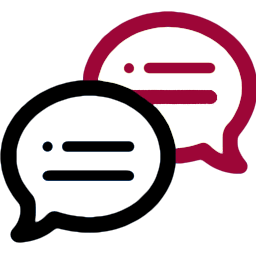
|
QFD and Value for the customer
For many companies it is still challenging to understand value (as defined in Lean Thinking). Or at least it is very difficult to translate the 'feelings of value' to real and practical requirements a...
 8 |

|
Quality Control Techniques
What quality control techniques (beyond QFD) can be considered and used in operation and production management by managers to improve the company's productivity, growth and perpetuity? Please give nam...
 4  1 comments |

|
Why Lack of Quality?
Hello everybody I am working as an MBA lecturer and I teach TQM. I'm quite happy to learn something more from this article. As we all know especially who belong to quality management, quality is the m...
 -1  2 comments |
|
|
|
Courses about Quality Function Deployment.
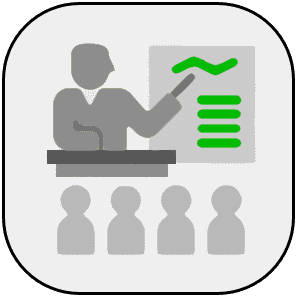
Beginners Course
|

Advanced Course
|

Course for Experts
|
|
|
|
The best, top-rated topics about Quality Function Deployment. Here you will find the most valuable ideas and practical suggestions.
|
|
|
Advanced insights about Quality Function Deployment. Here you will find professional advices by experts.

Consultancy Tips
|

Teaching Tips
|

Practical Implementation Tips
|
|
|
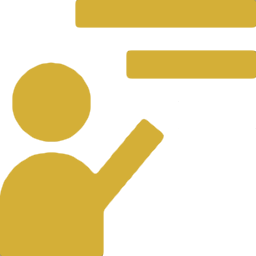
|
What Exactly is Quality? Multiple Definitions Quality Management
A product or service has to be in accordance with the wishes of the client. But organizations use different definitions ...
|

|
Quality of Services The Gronroos Model and Criteria
Mr. Gronroos formulated some criteria to test the quality of services (not always easy to measure this...):
1. Professi...
|

|
How to Derive the Customer Needs and/or Requirements? Ensuring a Proper Starting Point for QFD, Customer Analysis
One limitation of the QFD technique can be that it does not help to derive customer requirements.
In fact regarding tha...
|
|
|
|
Various sources of information regarding Quality Function Deployment. Here you will find powerpoints, videos, news, etc. to use in your own lectures and workshops.
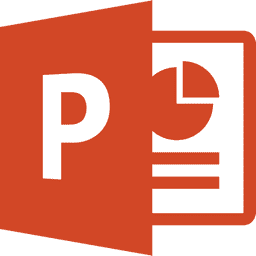
|
Designing for Quality with Quality Function Development, FAST and FFMEA Quality Management, Product Development, Product Quality Planning, APQP, Voice of the Customer
This presentation covers the concepts of Quality Function Development, FAST and FFMEA, and Advanced Product Quality Plan...
|

|
The Costs of DISsatisfied Customers Customer Satisfaction
This presentation is about the costs of dissatisfied customers.
The authors investigate the main sources of customer in...
|
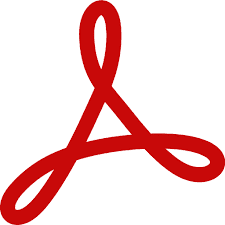
|
QFD in Healthcare Healthcare
Paper by Carey Hepler and Glenn Mazur on the application of QFD within Blue Cross Blue Shiled of Florida (BCBSF)....
|

|
Steve Jobs on Dr. Joseph Juran: Back to the Basics Quality Management, Focusing on the Most Important Things, Pareto Principle
In this video a young Steve Jobs explains the influence of Dr. Juran on Steve’s ideas of process and quality management....
|

|
History of QFD QFD Past, Present ande Future
Presentation by Yoji Akao gives an onverview of the history of QFD....
|
|
|
|
Useful tools regarding Quality Function Deployment.

News
|

Videos
|
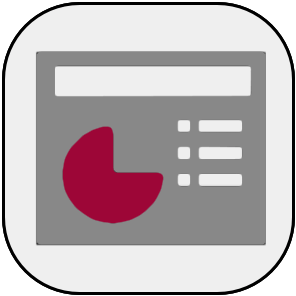
Presentations
|
| |
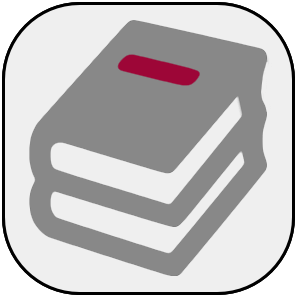
Books
|

Academic
|
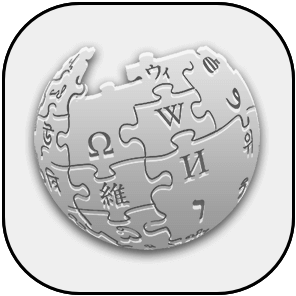
More
|
|
|
|
Compare with:
TQM |
Customer Satisfaction
Model | SERVQUAL
| Analytical CRM |
Hoshin Kanri - Policy
Deployment |
Relationship Marketing
| Kaizen |
System Thinking
| Deming Cycle |
EFQM |
Six Sigma |
Value Stream Mapping
Return to Management Hub: Marketing & Sales
| Supply Chain & Quality
More Management Methods, Models and Theory
|
|
|













